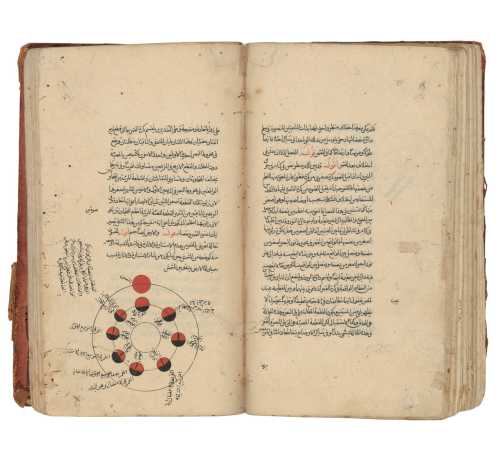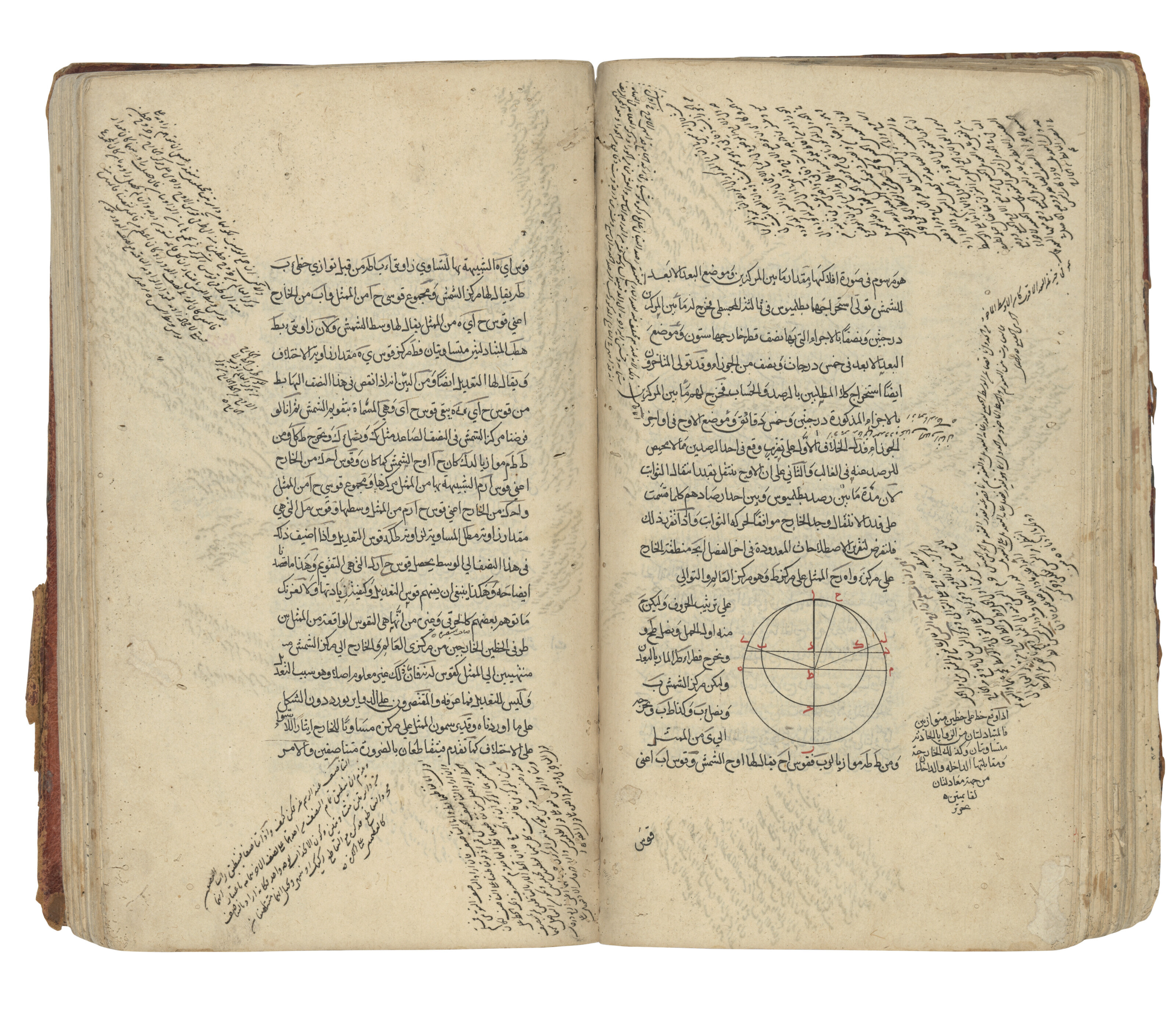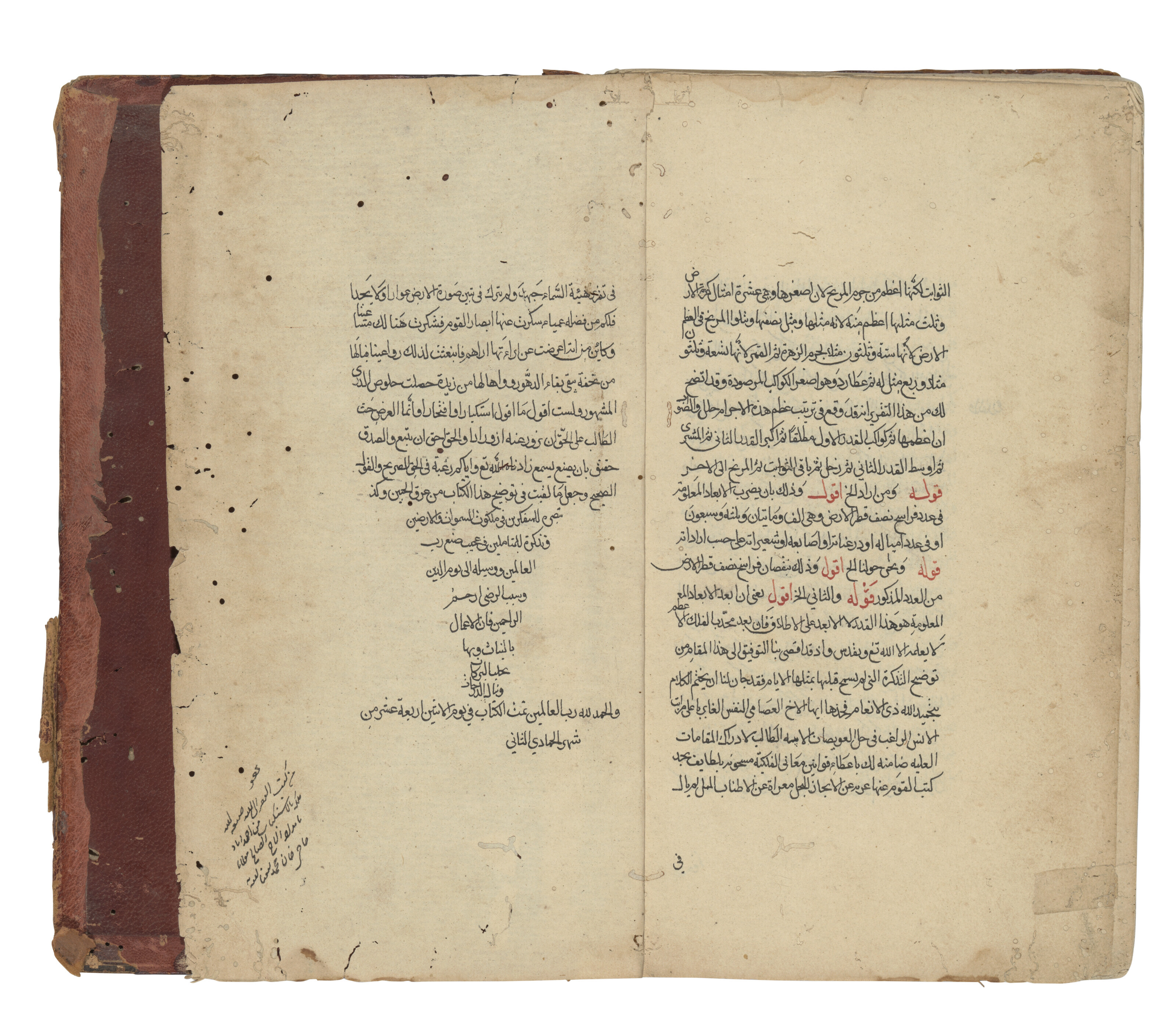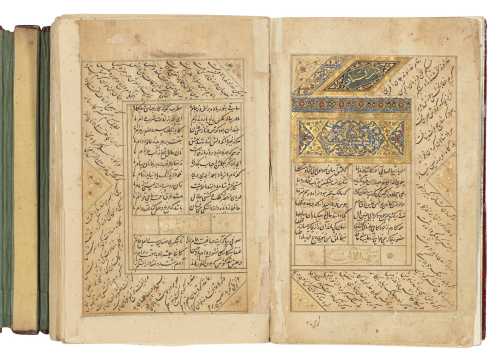- NIZAM AL-DIN NISHAPURI (D. 1328-9): SHARH TAHRIR AL-MAJISTI
- Handicrafts and classics, Calligraphy, manuscript
- 11.7 * 21.6 cm
- IRAN, 16TH CENTURY
A commentary on al-Tusi's Tahrir al-majisti (Recension of the Almagest), Arabic manuscript on paper, 188ff., plus two flyleaves, 19ll. of neat black naskh, keywords picked out in red, catchwords, numerous tables and a diagram in red and black, marginal notes, colophon with partial date 14 Jumada II, scattered minor wormholes, overall good condition, in brown morocco
Folio 8 1⁄2 x 4 5⁄8in. (21.6 x 11.7cm.)
Estimation
£10,000
13,161 USD
-
£15,000
19,742 USD
Realized Price
£10,080
13,267 USD
19.36%
Artwork Description
Nasir al-Din Abu Ja'far Muhammad bin Muhammad al-Tusi (d. 1274) was born in Tus in AH 597⁄1201 AD. He was the most eminent scholar of the medieval world in trigonometry and wrote on a wide range of topics within the areas of mathematics and astronomy as well as on logic and theology. He composed about 150 works and is well-known as the founder of the observatory at Maragha in 1259 for the Ilkhanid ruler Hülegü, which led to a major renaissance of Islamic Astronomy (Seyyed Hossein Nasr, Islamic Science, An Illustrated Study, Westerham, 1976, p.105). He is considered by the medieval historian Ibn Khaldun as better than any other later Iranian scholars (James Winston Morris, "An Arab Machiavelli? Rhetoric, Philosophy and Politics in Ibn Khaldun’s Critique of Sufism", Harvard Middle Eastern and Islamic Review 8, 2009, p.286). Because of the importance of Tusi's scholarship, many commentaries on his works have been written, particularly of his most renowned texts including the Tadhkira fi ‘ilm al-ha’a (Memorandum of astronomy) and the recension of the Almagest, where he updates several of Ptolemy’s methods.
Al-Hasan bin Muhammad bin al-Husayn al-Qumi al-Nishapuri was a mathematician and philosopher, originally from Qom but who resided in Nishapur. He wrote religious works, including a commentary on the Qur'an as well as scientific works. After moving to the Ilkhanid capital of Tabriz, he studied at the Ilkhanid observatory of Maragha, under Qutb al-Din Shirazi, himself a student of Nasir al-Din Tusi (Khayr al-Din Al-Zarkaly, Al A’lam, Biographical Dictionary, 2007, vol. 2, p.216). A commentary of al-Tadhkira by Nishapuri was sold in these rooms 21 April 2016, lot 49, while a fifteenth century manuscript with both al-Tusi’s Tahrir al-majisti and Nishapuri’s commentary is housed in the University of Pennsylvania (inv.no. UPenn LJS 392).
Al-Hasan bin Muhammad bin al-Husayn al-Qumi al-Nishapuri was a mathematician and philosopher, originally from Qom but who resided in Nishapur. He wrote religious works, including a commentary on the Qur'an as well as scientific works. After moving to the Ilkhanid capital of Tabriz, he studied at the Ilkhanid observatory of Maragha, under Qutb al-Din Shirazi, himself a student of Nasir al-Din Tusi (Khayr al-Din Al-Zarkaly, Al A’lam, Biographical Dictionary, 2007, vol. 2, p.216). A commentary of al-Tadhkira by Nishapuri was sold in these rooms 21 April 2016, lot 49, while a fifteenth century manuscript with both al-Tusi’s Tahrir al-majisti and Nishapuri’s commentary is housed in the University of Pennsylvania (inv.no. UPenn LJS 392).
More lots by Unknown Artist
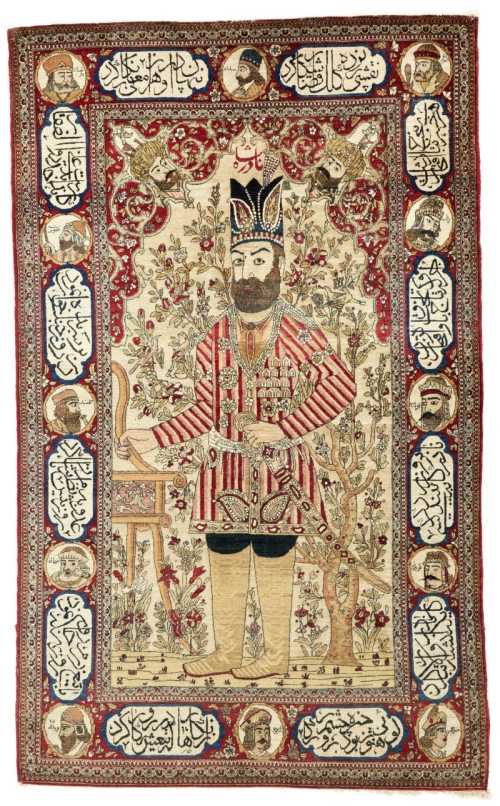
An Isfahan pictorial rug, Central Persia, circa 1910
Estimation
£4,000
5,236 USD
-
£6,000
7,853 USD
Realized Price
£5,670
7,421 USD
13.4%
Sale Date
Sotheby's
-
30 March 2022

A gold medal commemorating the coronation of Muhammad Reza Shah and Queen Farah
Estimation
£100
132 USD
-
£200
263 USD
Realized Price
£160
211 USD
6.667%
Sell at
Sale Date
Rosebery's Auction
-
1 April 2022
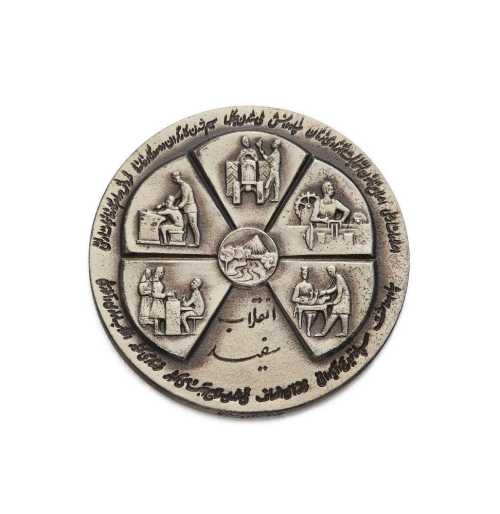
A silver memorial medal of the White Revolution, Muhammad Reza Shah, 1967
Estimation
£200
263 USD
-
£300
395 USD
Realized Price
£170
224 USD
32%
Sell at
Sale Date
Rosebery's Auction
-
1 April 2022
Realized Price
67,245 USD
Min Estimate
35,481 USD
Max Estimate
53,247 USD
Average Artwork Worth
+83.63%
Average Growth of Artwork Worth
Sales Performance Against Estimates
Average & Median Sold Lot Value
2021 - 2025
Performance vs. Estimate
2021 - 2025
Sell-through Rate
2021 - 2025
Similar Artworks

Untitled
Estimation
4,000,000,000﷼
12,048 USD
-
4,000,000,000﷼
12,048 USD
Realized Price
4,000,000,000﷼
12,048 USD
0%
Sell at
Sale Date
National Auction
-
22 June 2022
